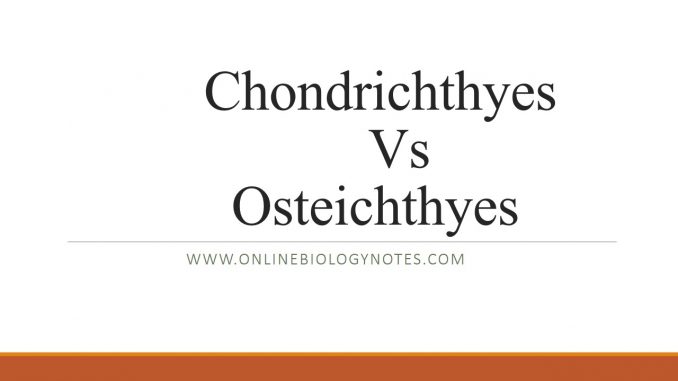
Characteristics |
Chondrichthyes (Cartilaginous fish) |
Osteichthyes (Bony fish)
|
| Habitat | Mainly marine | Marine as well as freshwater |
| Symmetry | Usually dorsoventrally flattened | Usually bilateral symmetry |
| Endo-skeleton | Cartilaginous | Mostly bony |
| Caudal fin | Heterocrecal | Heterocercal or diphyceral |
| Pelvic fin | Usually posterior. | Mostly anterior, occasionally posterior. |
| Mouth | Large, crescent shaped on the ventral side of the head | Variable shape and size at the tip or terminal part of the head |
| Gill slit |
Usually five pairs of gill slits which are not protected by an operculum. | Five pairs of gill slits protected by an operculum |
| Cloaca | A true cloaca is present |
In most bony fishes, the cloaca is absent, and the anus, urinary and genital apertures open separately. |
| Stomach | Typically J-shaped | Shape variable. Absent in some. |
| Intestine | Short with spiral valve in lumen | Long with no spiral valve |
| Liver | Usually has two lobes | Usually has three lobes |
| Brain |
Has large olfactory lobe, cerebrum and small optic lobe and cerebellum
| Has small olfactory lobes and cerebrum and large optic lobes and cerebellum |
| Retina | Lacks cone cell | a pair of cone cells preesnt |
| Eggs | A small number of large eggs with plenty of yolk | A large number of small eggs with little yolk |
| Fertilisation | Internal | Usually external |
| Development | internally. | externally. |
| Examples | Scolidon, Electric ray, string ray, Sharks, | Labeo, catla, Hilsa, Wallago, Hippocampus |
